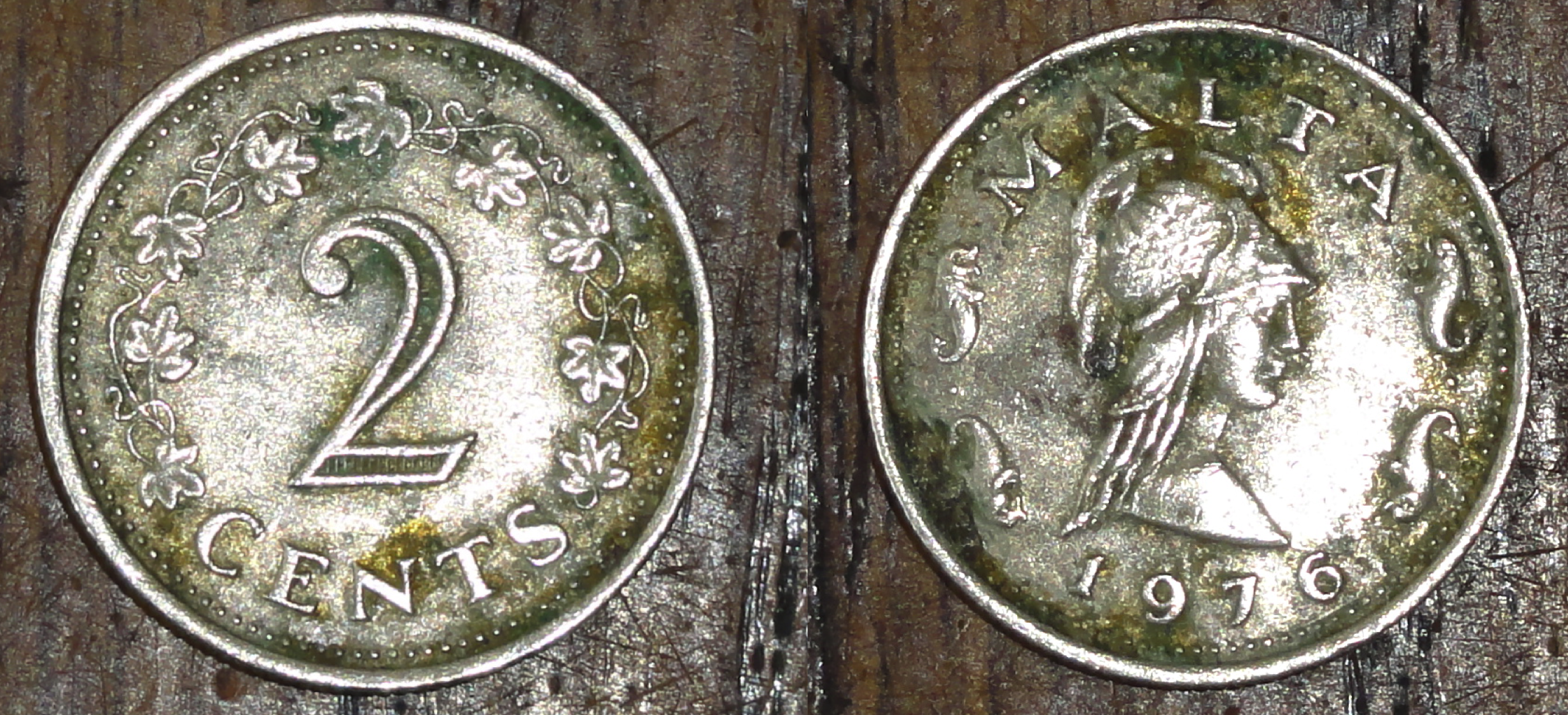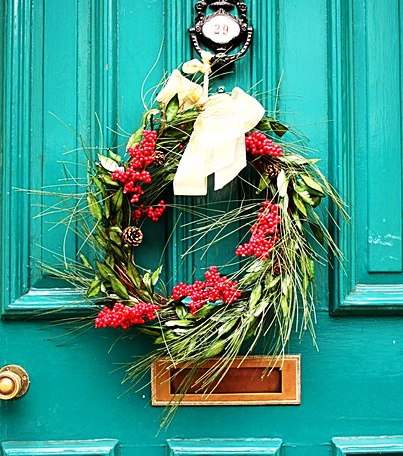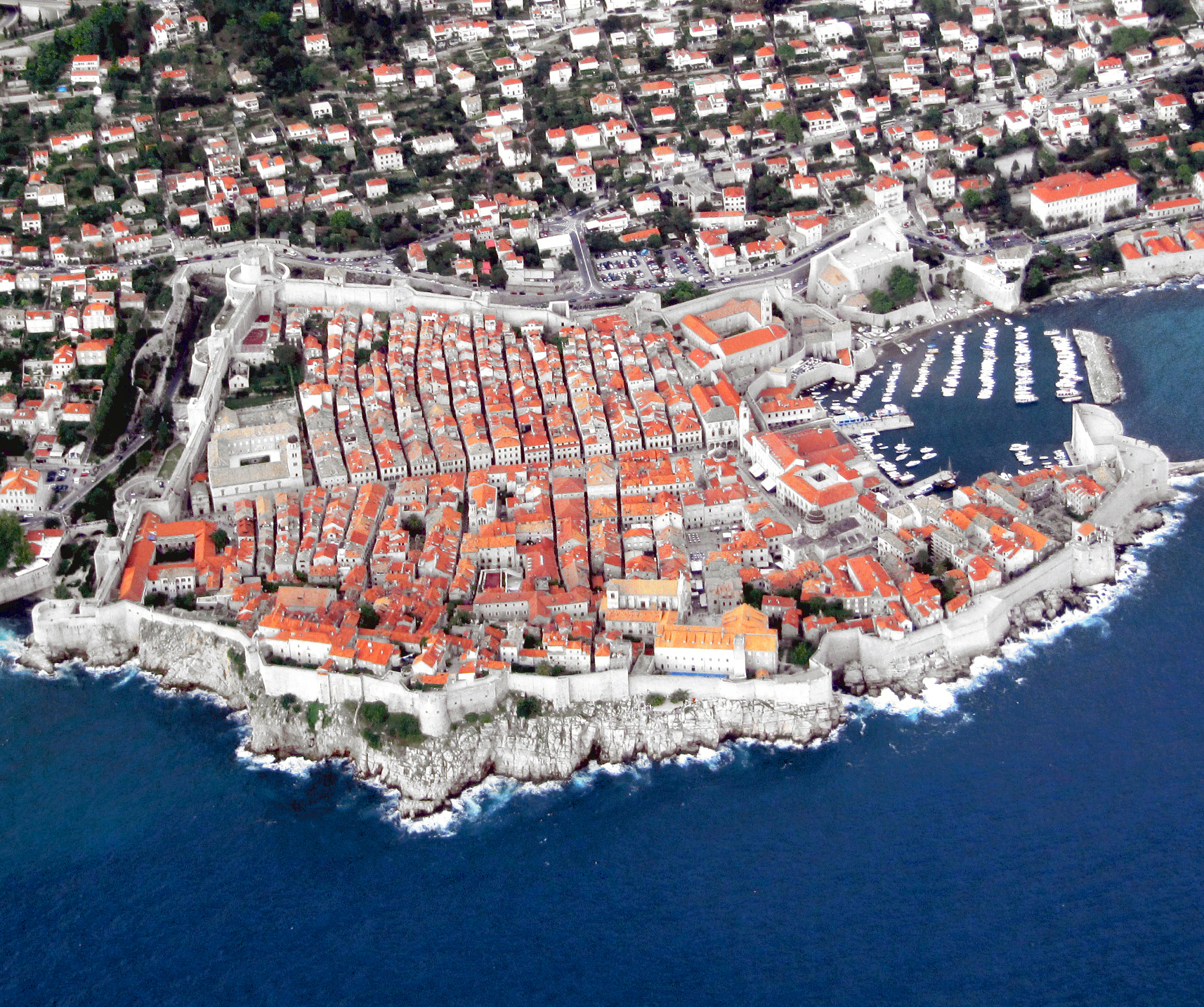|
Coat Of Arms Of Malta
The coat of arms of Malta is the national coat of arms of the country of Malta. The present coat of arms is described by the Emblem and Public Seal of Malta Act of 1988 as a shield showing an heraldic representation of the national flag of Malta; above the shield a mural crown in gold with a sally port and five turrets representing the fortifications of Malta and denoting a city-state; and around the shield a wreath of two branches: the dexter of olive, the sinister of palm, symbols of peace and traditionally associated with Malta, all in their proper colours, tied at base with a white ribbon, backed red and upon which are written the words (“Republic of Malta” in Maltese) in capital letters in black. The national coat of arms also appears on the Presidential Standard of Malta. The various coats of arms appear on passports, excise stamps, official documents and various other uses. Many Maltese coins feature a coat of arms, most notably the second series of the Maltese ... [...More Info...] [...Related Items...] OR: [Wikipedia] [Google] [Baidu] |
Banner Of Arms
A banner of arms is a type of heraldic flag, characterised by sharing its imagery with that of the coat of arms (''i.e.'' the shield of a full heraldic achievement, rendered in a square or rectangular shape of the flag). The term is derived from the terminology of heraldry but mostly used in vexillology. Examples of modern national flags which are banners of arms are the flags of Austria, Iraq, and Switzerland. The banner of arms is sometimes simply called a banner A banner can be a flag or another piece of cloth bearing a symbol, logo, slogan or another message. A flag whose design is the same as the shield in a coat of arms (but usually in a square or rectangular shape) is called a banner of arms. Also, ..., but a banner is in a more strict sense a one of a kind personal flag of a nobleman held in battle. Examples National / state flags Provincial flags County flags City flags Organization flags Notes References External links * {{Heraldry Types ... [...More Info...] [...Related Items...] OR: [Wikipedia] [Google] [Baidu] |
Shield
A shield is a piece of personal armour held in the hand, which may or may not be strapped to the wrist or forearm. Shields are used to intercept specific attacks, whether from close-ranged weaponry like spears or long ranged projectiles such as arrows. They function as means of active blocks, as well as to provide passive protection by closing one or more lines of engagement during combat. Shields vary greatly in size and shape, ranging from large panels that protect the user's whole body to small models (such as the buckler) that were intended for hand-to-hand-combat use. Shields also vary a great deal in thickness; whereas some shields were made of relatively deep, absorbent, wooden planking to protect soldiers from the impact of spears and crossbow bolts, others were thinner and lighter and designed mainly for deflecting blade strikes (like the roromaraugi or qauata). Finally, shields vary greatly in shape, ranging in roundness to angularity, proportional length and wi ... [...More Info...] [...Related Items...] OR: [Wikipedia] [Google] [Baidu] |
Maltese Euro Coins
Maltese euro coins feature three separate designs for the three series of coins. Malta has been a member of the European Union since 1 May 2004, and is a member of the Economic and Monetary Union of the European Union. Malta adopted the euro as its official currency on 1 January 2008, replacing the Maltese lira. For a period of one month until 31 January, there was a dual circulation for Malta where the Euro and Maltese lira were used alongside each other. Maltese euro designs For Euro coins#Depiction of euro coinage - Reverse side, images of the common side and a detailed description of the coins, see euro coins. Design selection process The selection of the designs of the coins was decided by public consultation in two rounds. The first round of the consultation process started on 14 January 2006 and ended on 29 January 2006. During this period the Maltese public could participate in the process by choosing from a total of twelve options, divided into four design themes – Pr ... [...More Info...] [...Related Items...] OR: [Wikipedia] [Google] [Baidu] |
Coins Of The Maltese Lira
Coins of the Maltese lira have been struck from when State of Malta, Malta adopted decimal currency in 1972, to 2007, after which Malta adopted the euro. There were 10 mils in one cent, and 100 cents in one Maltese lira. First series (1972–1982) The coins in this series replaced the Coins of the pound sterling#Pre-decimal coinage, pre-decimal Pound Sterling which had been in use in Malta since 1825. Therefore, the sizes for some coins were similar to their pre-decimal equivalents, for example the 5c was similar to the Shilling (British coin), shilling and the 10c to the Two shilling coin, two shillings. These coins were designed by Christopher Ironside OBE. In June 1975 an octagonal 25 cent coin was introduced to commemorate Malta becoming a republic within the Commonwealth of Nations on 13 December 1974. The new Coat of arms of Malta, emblem appeared on the obverse side, and the 25c coin was the first coin to depict the new republican emblem. Second series (1986–20 ... [...More Info...] [...Related Items...] OR: [Wikipedia] [Google] [Baidu] |
Flag Of The President Of Malta
A flag is a piece of fabric (most often rectangular) with distinctive colours and design. It is used as a symbol, a signalling device, or for decoration. The term ''flag'' is also used to refer to the graphic design employed, and flags have evolved into a general tool for rudimentary signalling and identification, especially in environments where communication is challenging (such as the maritime environment, where semaphore is used). Many flags fall into groups of similar designs called flag families. The study of flags is known as "vexillology" from the Latin , meaning "flag" or "banner". National flags are patriotic symbols with widely varied interpretations that often include strong military associations because of their original and ongoing use for that purpose. Flags are also used in messaging, advertising, or for decorative purposes. Some military units are called "flags" after their use of flags. A ''flag'' (Arabic: ) is equivalent to a brigade in Arab countries. In ... [...More Info...] [...Related Items...] OR: [Wikipedia] [Google] [Baidu] |
Government Of Malta
The Government of Malta () is the executive branch of the Republic of Malta. It is made up of the Cabinet and the Parliamentary Secretaries. The Prime Minister is appointed by the President of Malta The president of Malta () is the constitutional head of state of Malta. The president is indirect election, indirectly elected by the House of Representatives of Malta, which appoints the president for a five-year term and requires them to sw ..., with the President making their decision based on the situation within the Maltese parliament. The Prime Minister is responsible for assigning departments of government to Permanent Secretaries. The President of Malta also appoints the rest of the cabinet with the assent of the Prime Minister of Malta. See also * Cabinet of Malta * List of Maltese governments References European governments {{Malta-stub ... [...More Info...] [...Related Items...] OR: [Wikipedia] [Google] [Baidu] |
Peace
Peace is a state of harmony in the absence of hostility and violence, and everything that discusses achieving human welfare through justice and peaceful conditions. In a societal sense, peace is commonly used to mean a lack of conflict (such as war) and freedom from fear of violence between individuals or groups. Promotion of peace is a core tenet of many philosophies, religions, and ideologies, many of which consider it a core tenet of their philosophy. Some examples are: religions such as Buddhism and Christianity, important figures like Gandhi, and throughout literature like " Perpetual Peace: A Philosophical Sketch" by Immanuel Kant, " The Art of Peace" by Morihei Ueshiba, or ideologies that strictly adhere to it such as Pacifism within a sociopolitical scope. It is a frequent subject of symbolism and features prominently in art and other cultural traditions. The representation of peace has taken many shapes, with a variety of symbols pertaining to it based on ... [...More Info...] [...Related Items...] OR: [Wikipedia] [Google] [Baidu] |
Palm Tree
The Arecaceae () is a family of perennial, flowering plants in the monocot order Arecales. Their growth form can be climbers, shrubs, tree-like and stemless plants, all commonly known as palms. Those having a tree-like form are colloquially called palm trees. Currently, 181 genera with around 2,600 species are known, most of which are restricted to tropical and subtropical climates. Most palms are distinguished by their large, compound, evergreen leaves, known as fronds, arranged at the top of an unbranched stem, except for the Hyphaene genus, who has branched palms. However, palms exhibit an enormous diversity in physical characteristics and inhabit nearly every type of habitat within their range, from rainforests to deserts. Palms are among the best known and most extensively cultivated plant families. They have been important to humans throughout much of history, especially in regions like the Middle East and North Africa. A wide range of common products and foods are de ... [...More Info...] [...Related Items...] OR: [Wikipedia] [Google] [Baidu] |
Olive
The olive, botanical name ''Olea europaea'' ("European olive"), is a species of Subtropics, subtropical evergreen tree in the Family (biology), family Oleaceae. Originating in Anatolia, Asia Minor, it is abundant throughout the Mediterranean Basin, with wild subspecies in Africa and western Asia; modern Cultivar, cultivars are traced primarily to the Near East, Aegean Sea, and Strait of Gibraltar. The olive is the type species for its genus, ''Olea'', and lends its name to the Oleaceae plant family, which includes species such as Syringa vulgaris, lilac, jasmine, forsythia, and Fraxinus, ash. The olive fruit is classed botanically as a drupe, similar to the cherry or peach. The term oil—now used to describe any Viscosity, viscous Hydrophobe, water-insoluble liquid—was virtually synonymous with olive oil, the Vegetable oil, liquid fat made from olives. The olive has deep historical, economic, and cultural significance in the Mediterranean; Georges Duhamel (author), George ... [...More Info...] [...Related Items...] OR: [Wikipedia] [Google] [Baidu] |
Wreath
A wreath () is an assortment of flowers, leaves, fruits, twigs, or various materials that is constructed to form a ring shape. In English-speaking countries, wreaths are used typically as household ornaments, most commonly as an Advent and Christmas decoration. They are also used in ceremonial events in many cultures around the globe. They can be worn as a chaplet around the head, or as a garland around the neck. Etymology The word ''wreath'' comes from Middle English ''wrethe'' and from Old English ''writha'' 'band'. History Ancient Etruscan wreaths Wreaths were a design used in ancient times in southern Europe. The most well-known are pieces of Etruscan civilization jewelry, made of gold or other precious metals. Symbols from Greek myths often appear in the designs, embossed in precious metal at the ends of the wreath. Ancient Roman writers referred to Etruscan ''corona sutilis'', which were wreaths with their leaves sewn onto a background. These wreaths rese ... [...More Info...] [...Related Items...] OR: [Wikipedia] [Google] [Baidu] |
City-state
A city-state is an independent sovereign city which serves as the center of political, economic, and cultural life over its contiguous territory. They have existed in many parts of the world throughout history, including cities such as Rome, Carthage, Athens and Sparta and the Italian city-states during the Middle Ages and Renaissance, such as Florence, Venice, Genoa and Milan. With the rise of nation states worldwide, there remains some disagreement on the number of modern city-states that still exist; Singapore, Monaco and Vatican City are the candidates most commonly discussed. Out of these, Singapore is the largest and most populous, and is generally considered to be the last real city-state left in the world, with full sovereignty, international borders, its own currency, a robust military, and substantial international influence in its own right. ''The Economist'' refers to it as the "world's only fully functioning city-state". Several non-sovereign cities enjoy a ... [...More Info...] [...Related Items...] OR: [Wikipedia] [Google] [Baidu] |
Fortifications Of Malta
The fortifications of Malta consist of a number of walled cities, citadels, forts, Watchtower, towers, Artillery battery, batteries, redoubts, Entrenchment (fortification), entrenchments and Pillbox (military), pillboxes. The fortifications were built over hundreds of years, from around 1450 BC to the mid-20th century, and they are a result of the Malta, Maltese islands' strategic position and natural harbours, which have made them very desirable for various powers. The earliest known fortifications in Malta are defensive walls built around Bronze Age settlements. The Phoenicians, Roman Empire, Romans and Byzantine Empire, Byzantines built a number of defensive walls around important settlements, but very little remains of these survive today. By the late medieval period, the main fortifications on Malta were the capital Mdina, the Cittadella (Gozo), Cittadella on Gozo, the Fort St. Angelo, Castrum Maris and a few coastal towers or lookout posts. The fortifications of Malta we ... [...More Info...] [...Related Items...] OR: [Wikipedia] [Google] [Baidu] |






